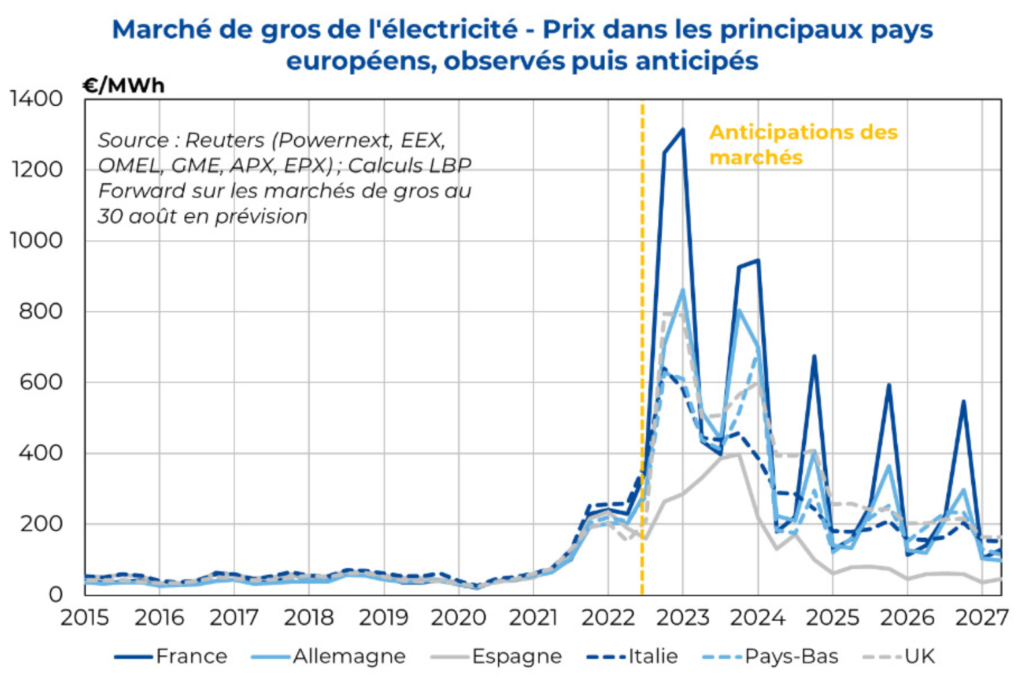

The last two years, featuring two major geopolitical events, the pandemic and the war in Ukraine, may offer lessons to prepare for our uncertain and unstable future. For instance, in terms of the cost of mobility, mighty regulatory decisions like a complete ban of internal combustion engine vehicles (ICEV) from sales as early as 2035 loom in the very near-future and may have quite an impact on this essential element of the modern life. No one can seriously imagine mobility will have morphed that much within the next ten years or so.
When the early thinkers of electromobility naively expected the electric revolution would create a brave new world of frugal, light, shared, non-elitist cars, 2023 already abounds in carmakers’ ads for large and heavy electric SUVs and light trucks with impressive ranges beyond 1,000 kilometers between recharges, promising hefty margins to car manufacturers.
Neither is it likely our suburban and exurban model of housing will evolve enough to make commuting between home and work redundant, despite a higher recourse to homeworking and some decentralization of public and private activities away from crowded metropolises.
Electromobility supporters continue to disregard range anxiety of today, caused by limited battery autonomy and limited availability of the recharging infrastructure, an uncomfortable situation that should improve as time goes by. They also disregard the significant cost premium to acquire an electric vehicle (EV), though it is not clear that this situation will not remain although the Chinese seem to have significantly reduced the cost to manufacture small EVs. Electromobility supporters keep on advocating that the total cost of operation (TCO) is smaller for EVs than for ICEVs, thanks to much reduced operating expense, the fuel cost, the price of electricity being much lower than the price of fossil liquid fuels, at least at home. Partly because of a reduced taxation, as explained in a post last year.
Studies abound showing the production of green electricity, wind- or solar-based, is getting cheaper, lower than for all other sources, biomass, fossil or nuclear, disregarding the additional cost of extra infrastructure to connect wind and solar electricity to the customers via existing grids. But reducing the carbon footprint of electricity production is not negotiable in the fight against climate change.
The question is rather when will electricity be low-carbon enough to justify an all-out usage of electricity in human activities, transport included. In the meantime, which may eventually prove quite long, EV users will have to live with the hectic electricity markets, especially in the EU if the ultra-liberal regulation stays in place, but also in countries where dramatic climatic events, floods, wild fires, heat waves, may bring havoc on electricity production and distribution.
A good example can be found in Paris, France, these days, in the aftermath of Russian invasion of Ukraine in February 2022 and the graph below, a combo of electricity market price expectations for the next five years, does not bode well for what customers will have to endure, a bumpy ride that may be softened by taxation and public support, but a bumpy ride nevertheless.

Electromobility makes sense in dense urban areas, inner cities, first and foremost. On the other hand, individual houses, where you can recharge your EV in your own garage at “household” electricity price conditions, cheaply in other terms, are few and apart in dense urban areas, the housing standard being apartments, with the car parked in the street. Meaning EV recharge has to be done through a private or public operator, not a large utility these days, which implies full exposure to market fluctuations, as this in-between operator is unlikely to be able to smooth out the rollercoaster due to its size on the market.
Guess what happened in the second half of 2022 in Paris? The cost of curbside recharge doubled in a few months, on average, meaning fast recharge cost sky-rocketed, making an equivalent mileage recharge more expensive than refilling at the service-station with gasoline or diesel. EV carmakers and electromobility support associations have noticed and, regardless of the mainstream message that 2023 is the year of EV success on the market, it looks like sales may not be that ecstatic, as long as uncertainty on electricity price persists.
This is begetting another call for public support, this time to guarantee cheap electricity to any EV user. Sure enough, with 36 million cars on the roads in France, roughly half a car for each citizen, an additional taxpayer burden to reduce the carbon footprint of a societal need like road transport may be money well invested, but taxes cannot climb forever to heavens and there are so many demands to fight climate change that our politicians will be eventually forced to choose priorities. If solid alternatives, like low-carbon liquid fuels, exist, other solutions than full electromobility may make sense, at least cohabitate for some time.
Philippe Marchand is a Bioenergy Steering Committee Member of the European Technology and Innovation Platform (ETIP).